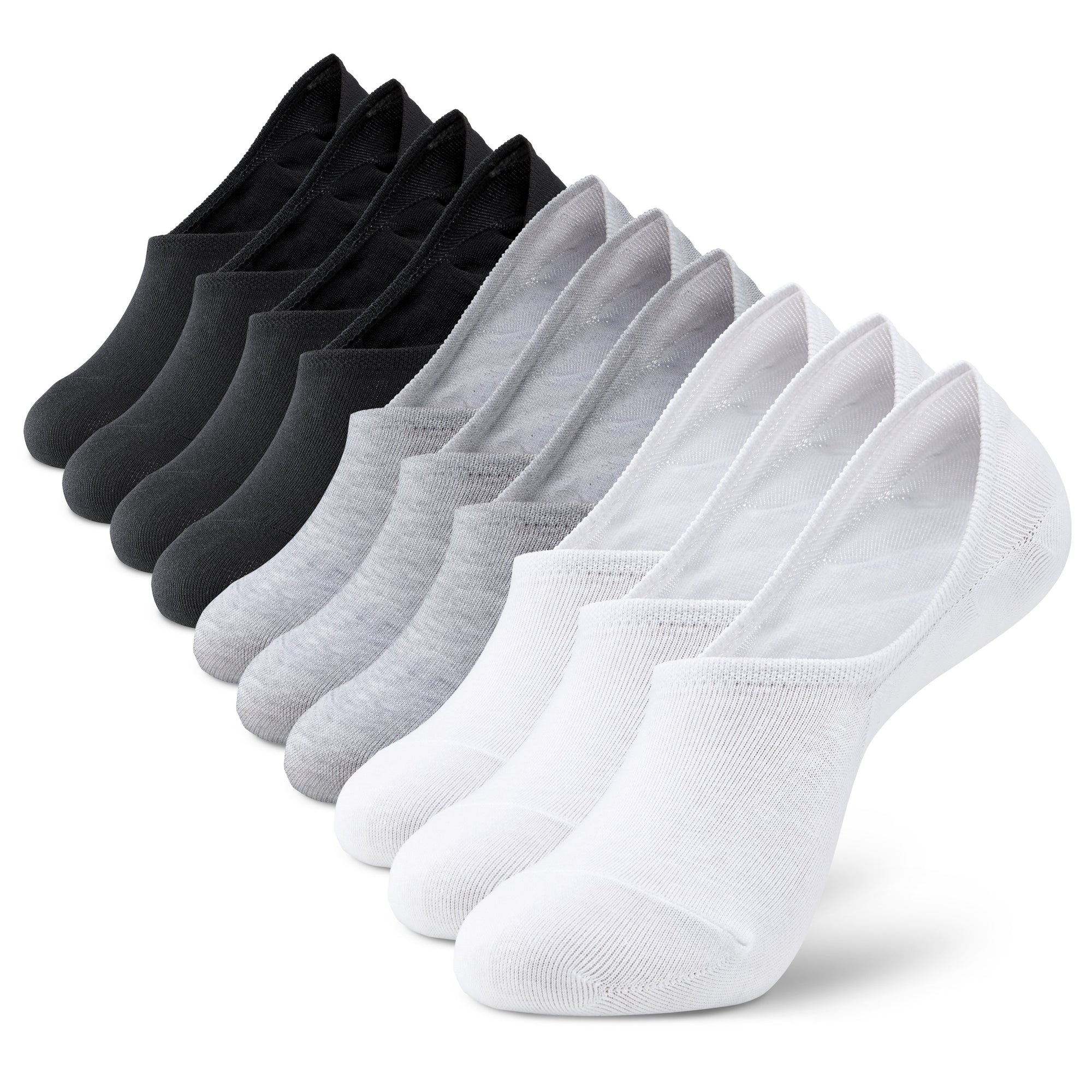Did you know there's an art to folding no-show socks?
While they may seem too small to bother with, properly folding and storing these tiny essentials in your sock drawer can save you space and reduce clutter. You're about to discover easy ways to fold and store not only no-show socks but also ankle socks, knee-high socks, and your regular socks, using everything from the single fold method to the military roll. Whether you opt for a simple sock roll, you'll soon master various ways to fold and neatly stack your socks, making your drawers as tidy as possible.
This process might even turn out to be therapeutic as you tuck, roll, and stretch those mismatched or favorite pairs into a neat, organized haven. So, why not stick around to find out the best methods to transform your chaotic sock drawer into a model of efficiency?
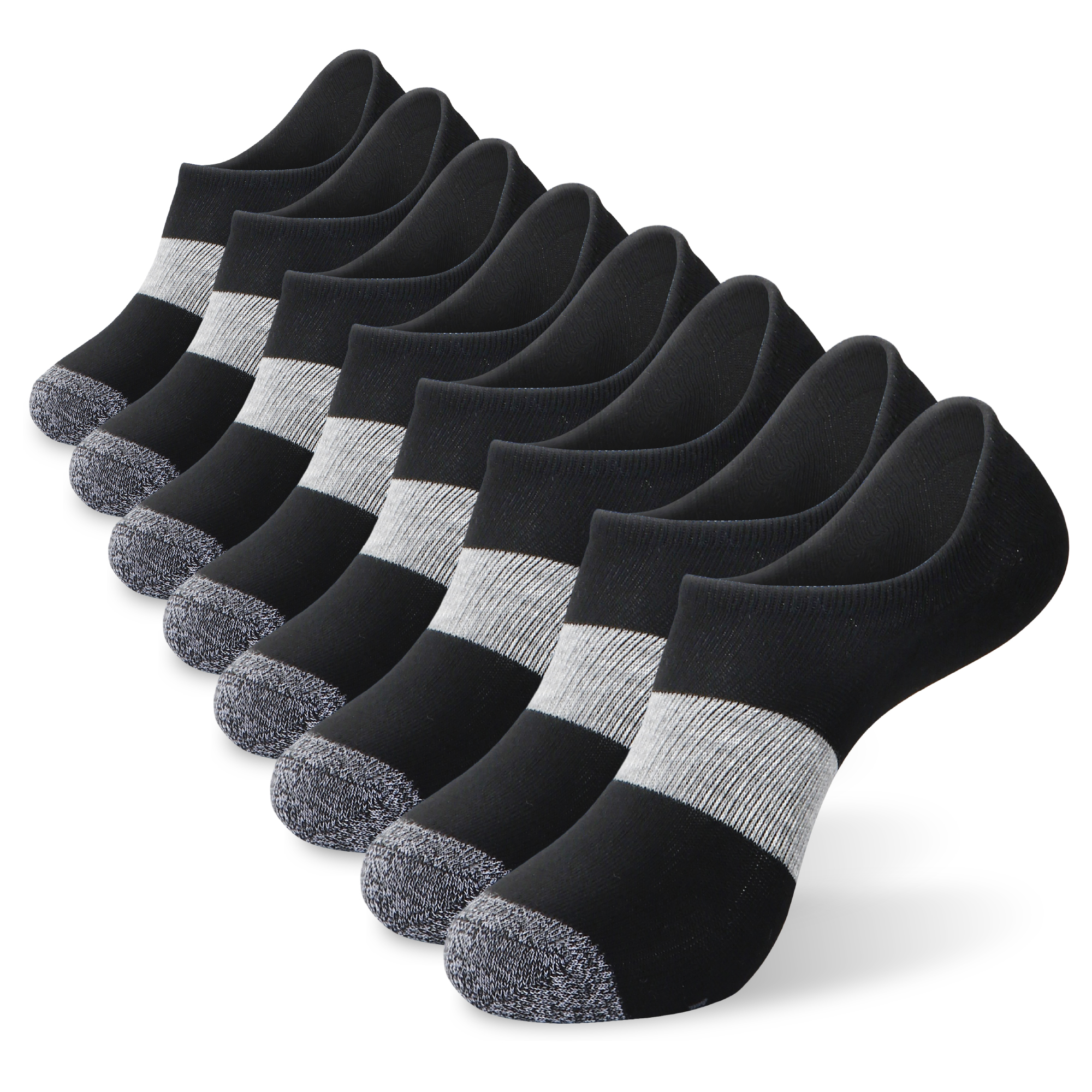
Understanding No-Show Socks
Let's dive into understanding no-show socks, a type of sock designed to stay hidden inside your shoes, offering the illusion of being sockless while still providing comfort and protection. No-show socks are shorter than traditional socks, they only cover your foot from the toe to the heel, not extending above the shoe line. This makes them popular for wearing with sneakers, loafers, boat shoes, and other footwear where you don't want your socks to be visible.
Now, you might be wondering, won't these socks slip off your foot while you're walking or running? Well, that's where the magic of non-slip grips come in. Many no-show socks are designed with these grips, or silicone heel pads, to prevent them from slipping off your foot. It's a handy little feature that ensures your socks stay where they should be, hidden inside your shoes.
These socks are available in various materials like cotton, bamboo, and synthetic blends. You can choose according to your preference for breathability and moisture-wicking. So, now that you know the basics, it's time to delve into how to fold and store them effectively.

Preparing Socks for Folding
Before you start folding your no-show socks, it's important to gather them all from various locations around your house to ensure they're clean and free from damage. Check each pair meticulously. If you find any dirty socks, it's best to wash them first. You wouldn't want to fold socks that aren't clean, would you?
Next, take a close look at each pair and sort socks based on their condition. If you spot any socks with holes or signs of wear, set them aside. You'll need to decide whether to repair or discard these later.
After you've sorted out the damaged socks, it's time to pair up the good ones. Try to sort socks by color or style. This will make it easier for you to find a matching pair when you need them. This step is crucial as it's part of the process to prepare socks for folding.
The Single Fold Technique
One of the easiest methods for folding your no-show socks is the Single Fold technique, which neatly pairs and compacts your socks for efficient storage. This beginner-friendly approach is simple yet efficient, making it an ideal solution for keeping your sock drawer tidy and organized.
To fold no-show socks using the single fold method, start by laying one sock on top of the other. This ensures your socks are perfectly aligned before you fold. Then, fold them in half, creating a neat, compact pair that's easy to store and find. It doesn't take long, and you'll certainly appreciate the ease and simplicity of this method.
This technique does more than just keep your socks in pairs; it helps save space in your sock drawer or storage area. With each pair of socks neatly folded and compacted, you'll be amazed at how much more room you have. This not only allows you to fit more socks in your drawer but also makes it easier to locate specific pairs when you need them. With the single fold method, maintaining a neat and organized sock drawer is a breeze.
The Cuff Flip Method
While the Single Fold technique is a popular choice, you might find the Cuff Flip method equally effective and convenient for storing your no-show socks. This method involves flipping and tucking the cuff of one sock over the other. This quick and simple process keeps pairs together, preventing any sock mix-ups in your drawer.
By folding socks using the Cuff Flip method, you're not only better organizing your drawer but also maximizing space. This comes in handy particularly if you're dealing with a smaller drawer or a large collection of socks.
It's worth noting that this method isn't just about neatness and space-saving. By using the Cuff Flip, you can easily identify and access your pairs when needed. Gone are the days of rummaging through a chaotic sock drawer in the morning rush.
Mastering the Military Roll
Diving into the art of the Military Roll can drastically transform your sock drawer, offering a compact and efficient storage solution for your no-show socks. Mastering this technique is beneficial as it's a space-saving method that ensures secure storage and prevents socks from unraveling in your drawer.
The Military Roll involves rolling your socks tightly from toe to cuff. It's an efficient way to organize your socks, especially if you have multiple pairs. By rolling them, you'll be able to fit more socks into a small space, maximizing your storage capacity. This method also allows for quick and easy access to your socks.
One of the main benefits of the Military Roll is its neatness. It keeps your socks tidy, making it easier for you to find the pair you need. If you've always had trouble with a messy sock drawer, then the Military Roll could be the answer to your problems.
The Fold and Tuck Strategy
If you're looking for a unique and effective way to store your patterned no-show socks, the Fold and Tuck strategy could be your perfect solution. This method can help maintain the shape and structure of your socks, ensuring that they're easy to identify in your sock drawer.
To start, you'll need to lay one sock on top of the other. Then, fold the cuff of the top sock over the bottom one. This tuck secures the pair, making it even easier to organize your drawer. No more searching through a jumbled mess of socks to find a matching pair!
This method is particularly ideal for no-show socks with patterns or designs. Since the cuff of the top sock is folded over, the pattern remains visible. This way, you'll always know what pair you're grabbing.
Utilizing the Square Fold
To keep your no-show socks from becoming a tangled mess, consider using the Square Fold method. This technique is efficient and helps your socks stay neat and organized. The process is simple; you start by placing one sock on top of the other, then fold them in half, creating a square shape.
The next step is crucial and is called tucking toes. This involves tucking the toes of one sock into the cuff of the other. This not only ensures that your socks remain paired, but also maintains a compact, square shape for easy storage.
You'll find the Square Fold method doesn't require any additional supplies, which makes it simple and efficient, perfect for those who prefer straightforward solutions. Moreover, this technique helps prevent your socks from getting lost or separated in the laundry or during storage.
Organizing Your Sock Drawer
Once you've mastered folding your no-show socks, it's time to turn your focus on effectively organizing your sock drawer. Start by decluttering. Remove mismatched or damaged socks to create space for your neatly folded no-show socks. It's easier to stay organized when you're not sifting through unusable pairs.
Next, separate your no-show socks from other types. This keeps them easily accessible, ensuring you're not rummaging through your drawer each morning. Consider using drawer dividers to create designated sections. This way, each pair has its rightful place, and you're not wasting time searching.
Now, let's talk about the best way to arrange your socks in the drawer. You want to maximize space and visibility. Stack your socks vertically. It's a game-changer. You'll see each pair at a glance without the need to dig through the pile.
Lastly, consider color-coding your no-show socks or sorting them based on patterns and styles. This might sound like overkill, but it's a quick and efficient selection system. With your socks organized this way, you'll save time and start your day smoothly.
Storage Solutions for No-Show Socks
Let's dive into some handy storage solutions for your no-show socks that won't only keep them paired and organized, but also save precious drawer space.
Rolling your socks is an effective technique that creates compact storage. It's simple: just offset the socks and roll them together from toes to cuff. This method is widely used due to its efficiency in making socks easy to find and grab when you're in a rush.
Alternatively, you could try the 'stuffed together' technique. This involves placing one sock inside the other, ensuring pairs stick together. It's a quick and easy way to avoid losing any stray socks.
Lastly, don't overlook the 'fold together' method. This combines elements of the fold-over and Kondo Fold techniques. It's a bit more time-consuming but results in a neat, organized package that's easy to identify in your drawer.
Caring for Your No-Show Socks
Keeping your no-show socks in top condition involves more than just proper folding and storage; it also requires attentive washing and maintenance. Begin by turning your socks inside out before washing. This simple act helps maintain their shape and prevents damage during the laundering process. It's also essential to avoid using fabric softener, as it can reduce the socks' moisture-wicking properties.
After washing, you should consider air drying your socks. This method prevents them from shrinking and helps maintain their elasticity. Be sure to avoid overloading your drying rack. Spreading them out allows for better air circulation, speeding up the drying process and preventing moisture buildup.
Storing your socks is just as vital. Opt for a breathable container or drawer that allows airflow. This precaution helps to keep your socks fresh and prevents moisture from being trapped, which could lead to mildew.
Lastly, don't forget the importance of regularly checking for wear and tear, especially on the heel and toe areas. By doing so, you can replace your worn-out socks before they become unwearable. Proper care goes beyond folding and storing; it's about making your no-show socks last as long as possible.
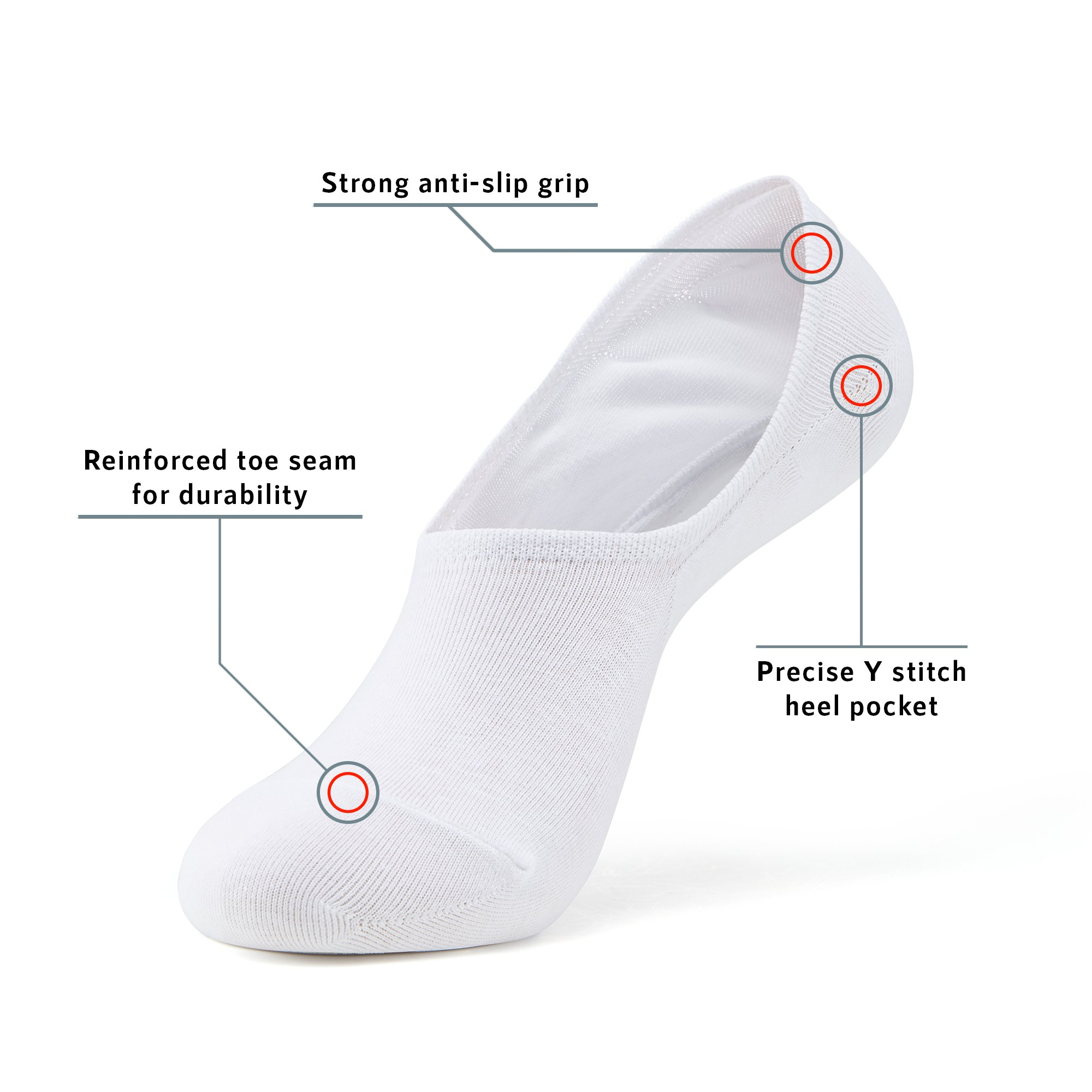
Experimenting With Different Techniques
Diving into various folding techniques can transform your no-show sock storage routine, making it more effective and efficient. Experimenting with the No-Show Roll technique is a great starting point. It's perfect for compact storage and easy access, especially when you're in a rush. Just fold ankle socks tightly into a neat roll, ensuring the pair stays together.
Consider the Stuffed Together method, which keeps pairs intact and organized. Gently stuff one sock into the other, creating a small ball of folded socks that fits neatly in drawers. This technique can be a game-changer for efficient storage, freeing up space for other items.
Alternatively, try the Fold Together technique for a neat, tidy drawer. This method involves folding over the socks and then using the Kondo Fold, a popular folding style inspired by organization guru Marie Kondo. This blend of techniques ensures your socks aren't only paired but also compact and easy to find.
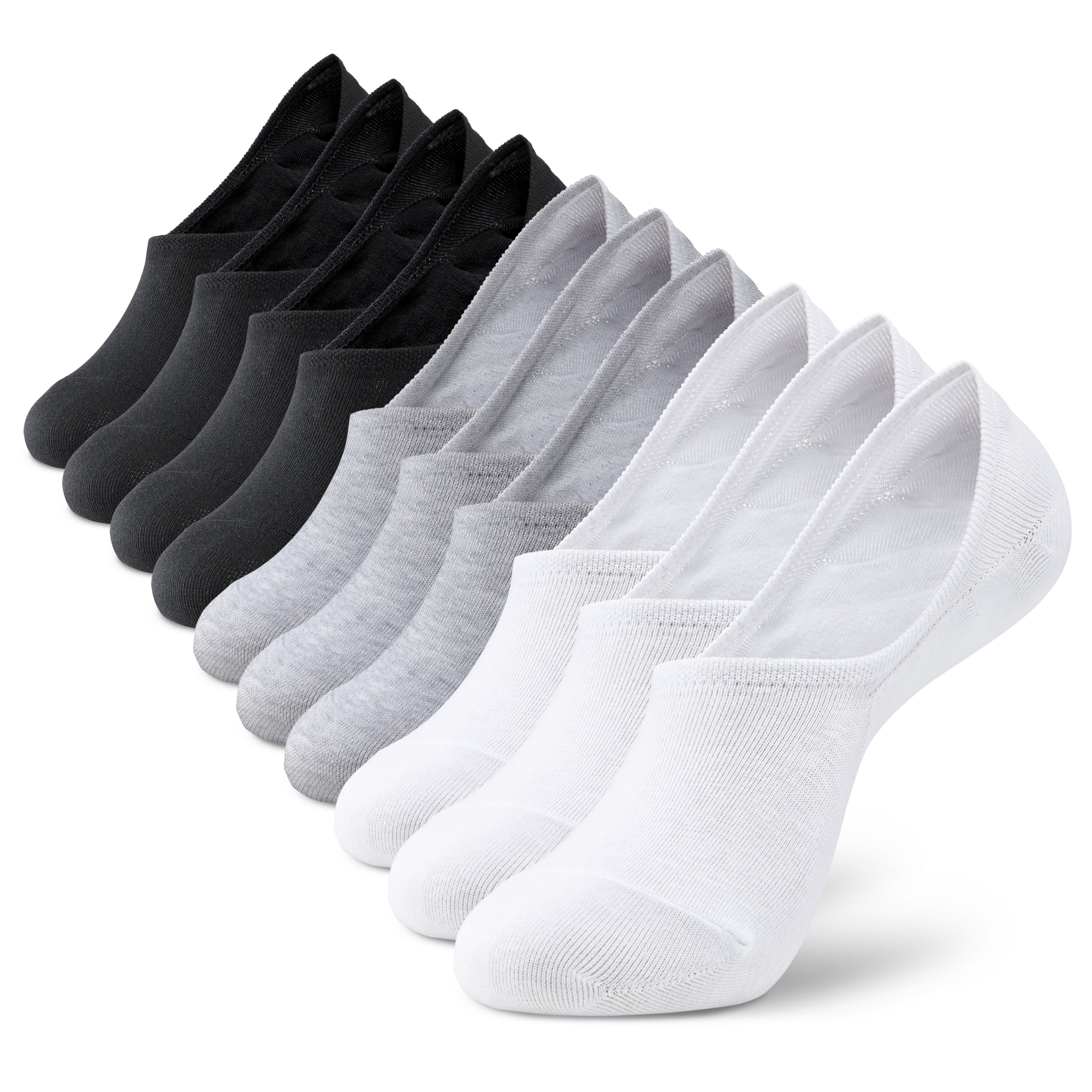
Also, there's the No-Show Roll for offset socks. It saves space and maintains pairs, ideal for those non-uniform socks. Experimenting with these techniques will undoubtedly revolutionize your sock folding and storage practices.
Maintaining An Organized Sock Drawer
After mastering various sock folding techniques, you'll find that sustaining an orderly sock drawer involves more than just folding; it also encompasses regular decluttering, sorting, and proper storage. It's essential to regularly clear out unworn or mismatched socks. This decluttering aids significantly in organizing socks, keeping your drawer clutter-free and manageable.
The next step is sorting your socks by type or color. This simple practice can save you time and frustration when you're in a rush. It's much easier to pick out the right pair when they're all neatly arranged. Drawer dividers are a great tool for this, keeping your socks visible and easily accessible.
Sock maintenance is just as important as proper storage. Regularly check for damaged socks and rotate them for even wear. This helps to prolong their lifespan and keep them in good condition. Remember, your socks can't take care of themselves – they're reliant on you!
Conclusion
So there you have it! Your no-show socks needn't be a bane any longer. With these simple techniques, you've turned chaos into order, reclaiming your sock drawer.
Remember, practice makes perfect and every sock has its place. Don't be afraid to experiment and find what works best for you.
With a bit of care, your socks will stay neat, organized, and easy to find. Now, bid farewell to the turmoil and welcome your organized, clutter-free future.
Happy folding!
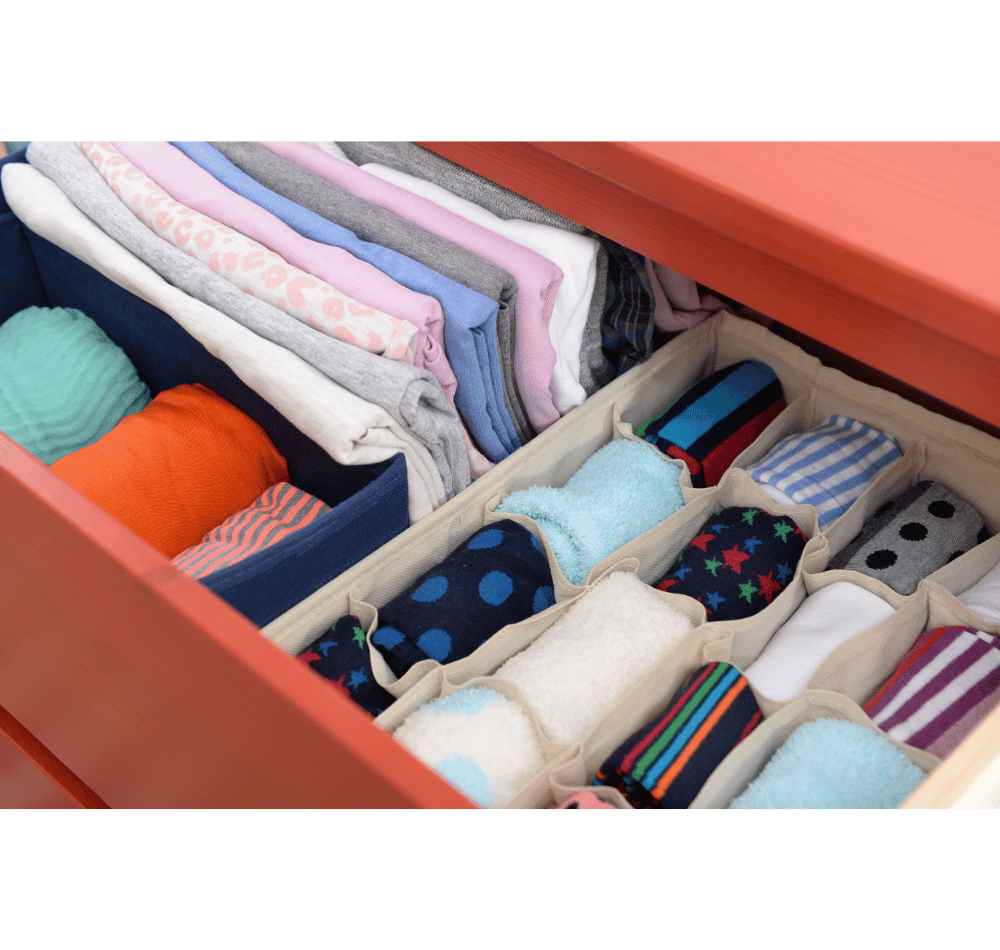
https://monfootsocks.com/collections/no-show
